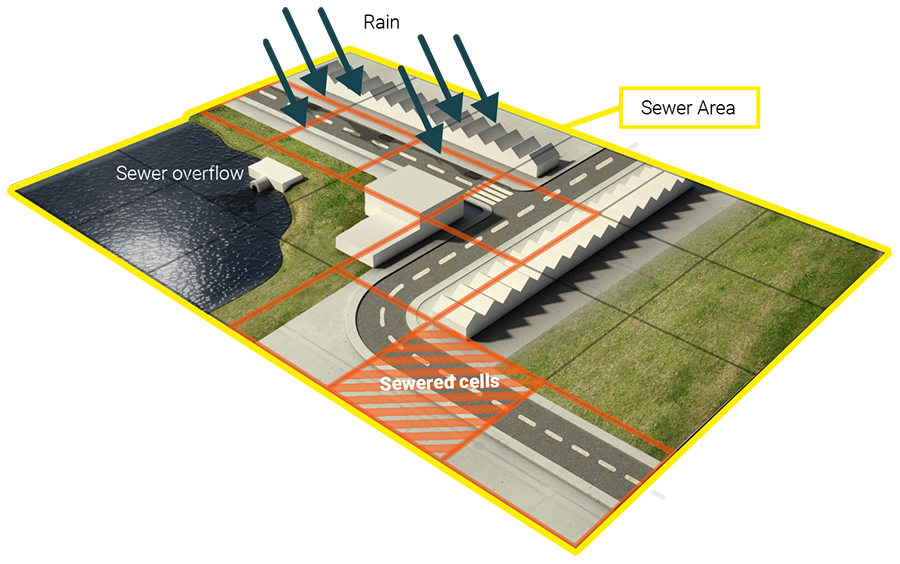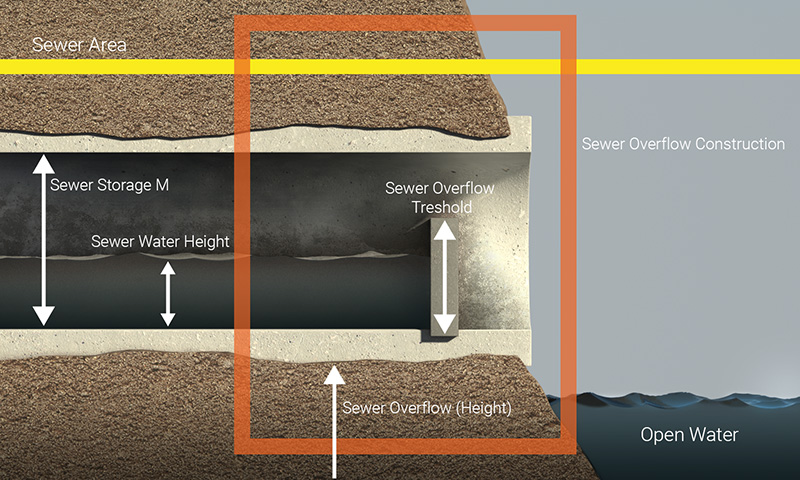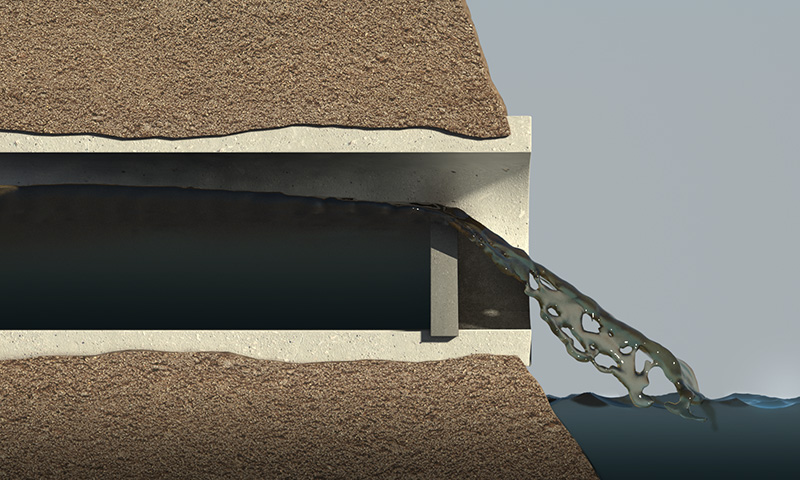Sewer model (Water Overlay): Difference between revisions
No edit summary |
|||
| (3 intermediate revisions by 2 users not shown) | |||
| Line 3: | Line 3: | ||
Conceptually, sewers are defined as [[Sewer area (Water Overlay)|sewer area]]s. If no sewer areas are present in the project, the sewer layer will not be used in the [[Water Module]]. | Conceptually, sewers are defined as [[Sewer area (Water Overlay)|sewer area]]s. If no sewer areas are present in the project, the sewer layer will not be used in the [[Water Module]]. | ||
Sewer areas define the areas in which the sewer system exist. The capacity of those sewers is based on the sewer area's [[Sewer_storage_(Water Overlay)|SEWER_STORAGE]] attribute. The actual locations at which sewer pipes (conceptually) exist are the grid cells where [[Sewered (Water Overlay)|sewered | Sewer areas define the areas in which the sewer system exist. The capacity of those sewers is based on the sewer area's [[Sewer_storage_(Water Overlay)|SEWER_STORAGE]] attribute. The actual locations at which sewer pipes (conceptually) exist are the grid cells where [[Sewered (Water Overlay)|sewered building]]s are covered (intersected) by a sewer area. Consequently, the total surface area of the actual sewer is dependent on the [[grid cell size]] and the existence of sewered buildings. | ||
The total sewer storage volume is determined by the sum of all grid cells marked as sewered, multiplied by the grid cell size and the [[Sewer_storage_(Water Overlay)|SEWER_STORAGE]]. | The total sewer storage volume is determined by the sum of all grid cells marked as sewered, multiplied by the grid cell size and the [[Sewer_storage_(Water Overlay)|SEWER_STORAGE]]. | ||
| Line 10: | Line 10: | ||
Water can flow into the sewer if the following conditions are met: | Water can flow into the sewer if the following conditions are met: | ||
* There is water on the [[Surface model (Water Overlay)|surface]] of a grid cell. | * There is water on the [[Surface model (Water Overlay)|surface]] of a grid cell. | ||
* There is a [[Sewered (Water Overlay)|sewered | * There is a [[Sewered (Water Overlay)|sewered building]] in the same grid cell. | ||
* There is a [[Sewer area (Water Overlay)|sewer area]] (and thus, combined with a sewer | * There is a [[Sewer area (Water Overlay)|sewer area]] (and thus, combined with a sewer building, a sewer) in the same grid cell. | ||
Water can only flow in until the sewer is filled to its capacity. If, during the simulation, water is removed from the sewer, water is allowed to flow in again, until its capacity is again reached. | Water can only flow in until the sewer is filled to its capacity. If, during the simulation, water is removed from the sewer, water is allowed to flow in again, until its capacity is again reached. | ||
| Line 42: | Line 42: | ||
* [[Surface model (Water Overlay)|Surface model]] | * [[Surface model (Water Overlay)|Surface model]] | ||
{{article end | |||
|seealso= | |||
* [[Sewer_area_(Water Overlay)|Sewer Area]] | * [[Sewer_area_(Water Overlay)|Sewer Area]] | ||
* [[Sewer_overflow_(Water Overlay)|Sewer Overflow]] | * [[Sewer_overflow_(Water Overlay)|Sewer Overflow]] | ||
}} | |||
{{WaterOverlay formula nav}} | {{WaterOverlay formula nav}} | ||
Latest revision as of 09:00, 29 January 2024
Sewers allow retention of excess (rain) water which would otherwise remain or flow on the surface.
Conceptually, sewers are defined as sewer areas. If no sewer areas are present in the project, the sewer layer will not be used in the Water Module.
Sewer areas define the areas in which the sewer system exist. The capacity of those sewers is based on the sewer area's SEWER_STORAGE attribute. The actual locations at which sewer pipes (conceptually) exist are the grid cells where sewered buildings are covered (intersected) by a sewer area. Consequently, the total surface area of the actual sewer is dependent on the grid cell size and the existence of sewered buildings.
The total sewer storage volume is determined by the sum of all grid cells marked as sewered, multiplied by the grid cell size and the SEWER_STORAGE.
Sewer influx
Water can flow into the sewer if the following conditions are met:
- There is water on the surface of a grid cell.
- There is a sewered building in the same grid cell.
- There is a sewer area (and thus, combined with a sewer building, a sewer) in the same grid cell.
Water can only flow in until the sewer is filled to its capacity. If, during the simulation, water is removed from the sewer, water is allowed to flow in again, until its capacity is again reached.
Water can only flow out of a sewer via a sewer overflow.
Sewer Overflow
Water can flow from a sewer back onto the surface via a Sewer overflow. The location of the sewer overflow marks the exit at which water flows out of the sewer. The (maximum) speed at which this water flows is determined by the SEWER_OVERFLOW_SPEED.
For sewer overflow to occur, two criteria have to be met:
- The amount of water in the sewer relative to the sewer's storage capacity as defined by the sewer area's SEWER_STORAGE attribute must exceed the SEWER_OVERFLOW_THRESHOLD.
- The water level in the sewer must exceed the water level at the location of the server overflow.
The water level of the sewer is the sum of the water height in the sewer and the SEWER_OVERFLOW attribute of the sewer overflow, which defines the height at which it is situated. So conceptually, the height is the sewer is directly related to the sewer overflow height.
External area
Sewer water can also be pumped to a region outside the project area. This is controlled through the sewer area's SEWER_PUMP_SPEED. Sewer water removed this way is removed from the hydrological model and cannot return back into the project area. The sewer pump speed cannot be negative; it is not allowed to pump water from outside the project area into the sewer.







